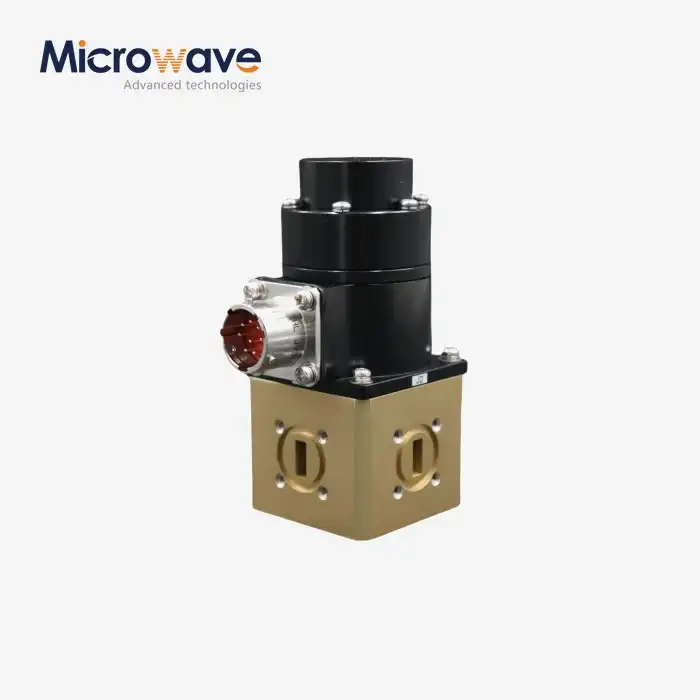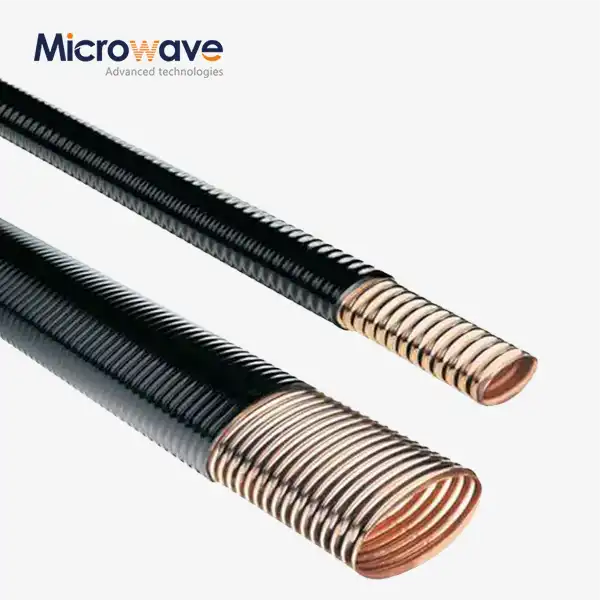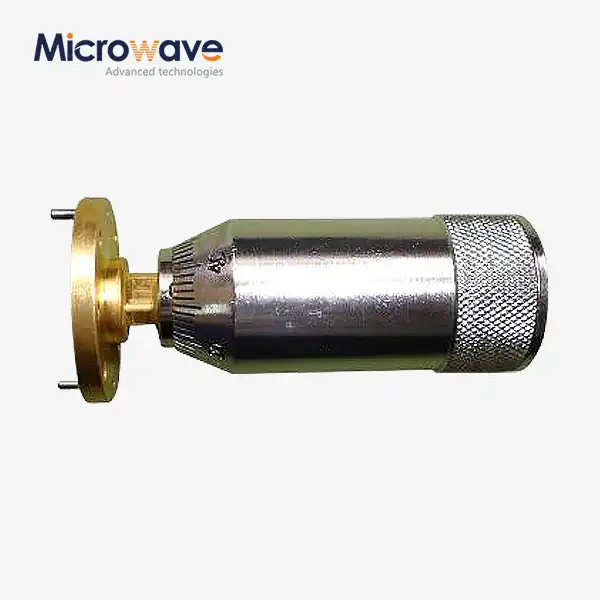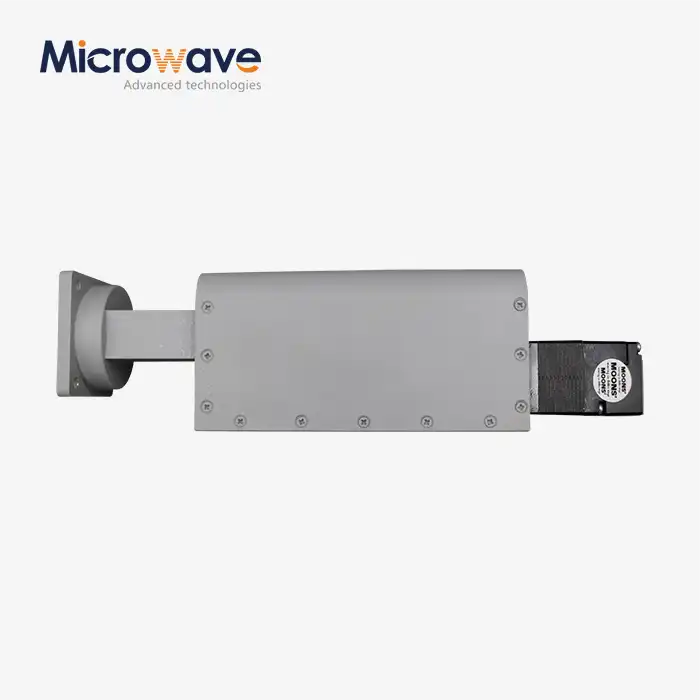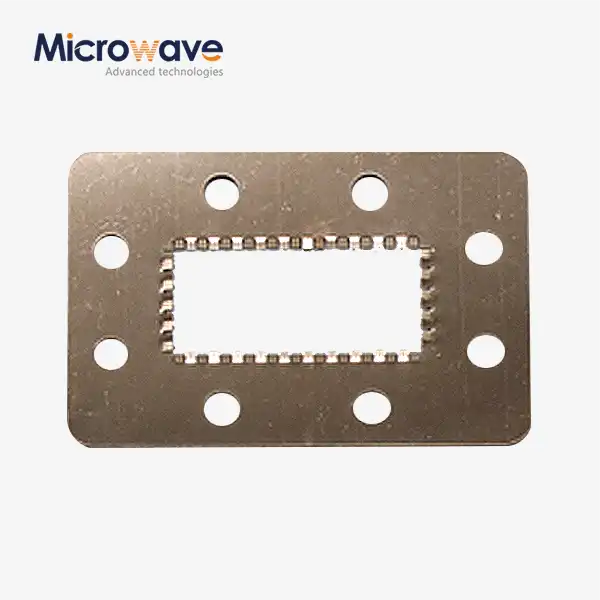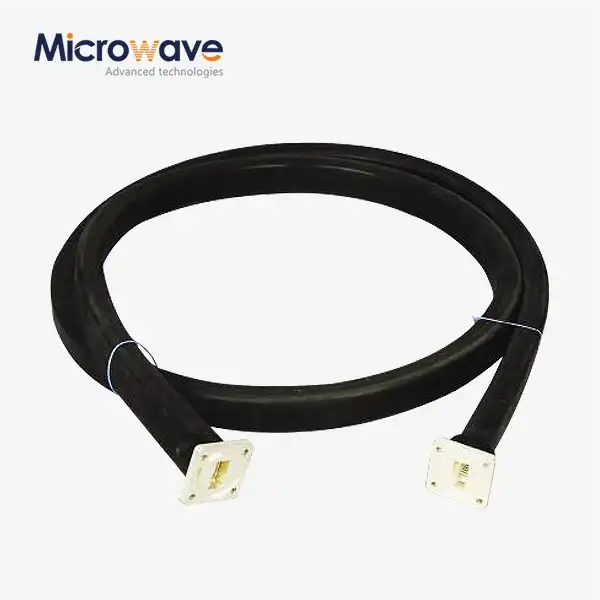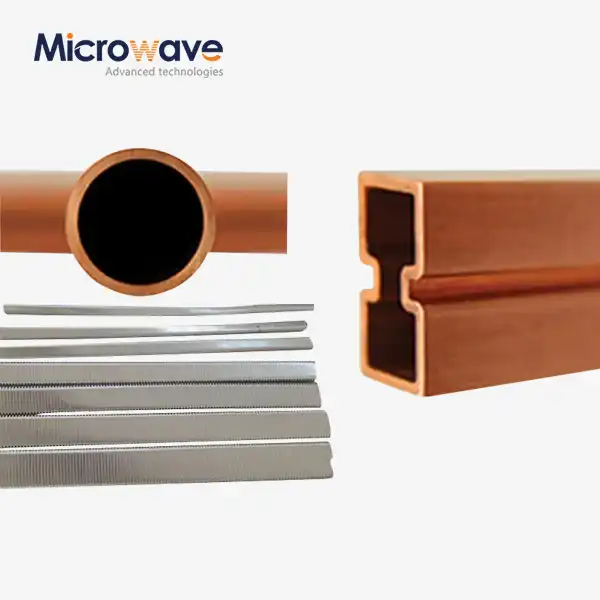How do waveguide shorts help in creating standing waves and testing the reflection characteristics of a system?
Waveguide shorts play a fundamental role in microwave engineering, particularly when it comes to creating standing waves and evaluating the reflection characteristics of waveguide systems. A Waveguide Short Plate is essentially a metal plate that completely blocks the waveguide cross-section, creating a perfect electrical short circuit. When electromagnetic waves encounter this short circuit, they are completely reflected back toward the source, resulting in standing wave patterns that engineers can measure and analyze. This behavior makes waveguide shorts invaluable tools for testing and calibrating microwave systems, as they provide a known reference reflection with a reflection coefficient magnitude of 1 (complete reflection) and a phase shift of 180 degrees. By measuring how signals interact with these shorts, engineers can characterize the impedance, loss, and other critical parameters of waveguide components and systems operating across frequency ranges from 1.72 GHz to 110 GHz.
The Physics Behind Waveguide Shorts and Standing Waves
Understanding Standing Wave Formation
When electromagnetic waves travel through a waveguide system and encounter a Waveguide Short Plate, a fascinating physical phenomenon occurs. The incident wave, upon hitting the short circuit created by the plate, is completely reflected with a 180-degree phase shift. This reflected wave then travels back along the waveguide in the opposite direction, superimposing with the ongoing incident wave. This superposition results in a standing wave pattern, where certain points along the waveguide experience constructive interference (maximum amplitude) while others experience destructive interference (minimum amplitude). The distance between consecutive maxima or minima is exactly half a wavelength, making these standing wave patterns highly predictable and measurable. This predictability is crucial for engineers who need to characterize waveguide components with precision. The Waveguide Short Plate ensures a high VSWR (Voltage Standing Wave Ratio) of 60:1 minimum, providing the high reflection short circuit necessary for accurate measurements. In high-frequency applications up to 110 GHz, where wavelengths are extremely small, the precision engineering of these short plates becomes even more critical to ensure accurate and repeatable measurement results.
Reflection Coefficient and Phase Relationships
The reflection coefficient, a complex parameter that describes how much of an electromagnetic wave is reflected by an impedance discontinuity, is maximized when using a Waveguide Short Plate. With an ideal short, the magnitude of the reflection coefficient equals 1, meaning 100% of the incident power is reflected. However, the phase of this reflection is equally important. At the short circuit boundary created by the Waveguide Short Plate, the electric field must be zero (a boundary condition for perfect conductors), which necessitates a 180-degree phase shift upon reflection. This specific phase relationship is what makes waveguide shorts particularly useful for calibration and reference purposes. Engineers working with satellite communications, radar systems, and other high-frequency applications rely on these precise phase relationships to establish reference planes in their measurement setups. The customizable designs offered by Advanced Microwave Technologies allow for tailoring these components to specific size, material, and frequency requirements, ensuring that the phase relationships remain consistent across different application scenarios. This attention to phase detail is especially important in phased array systems, where precise phase control is essential for proper beam formation and steering.
Mathematical Modeling of Waveguide Short Behavior
The behavior of a Waveguide Short Plate can be elegantly described using transmission line theory and Maxwell's equations. When modeling a waveguide terminated by a short circuit, the input impedance at any point along the waveguide can be calculated as Z_in = jZ_0 * tan(βl), where Z_0 is the characteristic impedance of the waveguide, β is the phase constant, and l is the distance from the short circuit. This equation reveals how the impedance varies periodically with distance, cycling between purely reactive inductive and capacitive values. This mathematical framework allows engineers to predict exactly where voltage maxima and minima will occur in the standing wave pattern. For precision applications, Advanced Microwave Technologies ensures that their Waveguide Short Plate products are manufactured with tight tolerances to match these theoretical predictions. In applications spanning the frequency range from 1.72 GHz to 110 GHz across 18 waveguide bands, from WR-10 to WR-430, these mathematical relationships remain consistent, though the physical dimensions change dramatically. By understanding these mathematical relationships, engineers can use waveguide shorts not just for testing but also as design elements in matching networks, filters, and other sophisticated microwave circuits where controlled reflections are desired.

Measurement Techniques Using Waveguide Shorts
Slotted Line Measurements
The slotted line measurement technique represents one of the most fundamental methods for characterizing waveguide components using a Waveguide Short Plate. This approach involves a waveguide with a longitudinal slot that allows a probe to sample the electric field at various points along its length. When the waveguide is terminated with a short plate, a standing wave pattern forms, and by measuring the voltage at different positions, engineers can determine the VSWR, reflection coefficient, and impedance characteristics of devices under test. The Waveguide Short Plate functions as a known reference that creates a predictable standing wave pattern with precise voltage maxima and minima separated by exactly a quarter wavelength. Advanced Microwave Technologies provides short plates with VSWR ratings of 60:1 minimum, ensuring highly reflective terminations that produce clear, well-defined standing wave patterns. This measurement technique, though considered traditional, remains invaluable for educational purposes and for applications where direct visualization of standing wave patterns is beneficial. The precision engineering of these components, adhering to ISO 9001:2008 quality standards, ensures that measurements remain consistent and repeatable, which is crucial for industries like defense and aerospace where reliability is paramount. The durability of these short plates, manufactured from robust materials such as brass and stainless steel, makes them suitable for repeated use in laboratory environments where components are frequently reconfigured for different measurements.
Network Analyzer Calibration
Modern vector network analyzers (VNAs) represent the state-of-the-art in microwave measurement technology, and Waveguide Short Plate components play a critical role in their calibration process. For accurate network analyzer measurements, a proper calibration routine must compensate for systematic errors in the measurement system. The most common calibration techniques—such as SOLT (Short-Open-Load-Through), TRL (Through-Reflect-Line), or LRL (Line-Reflect-Line)—all require a highly reflective standard, which is precisely what a waveguide short provides. The Waveguide Short Plate serves as the "short" standard in these calibrations, establishing a known reference plane with a reflection coefficient of -1 (magnitude 1, phase 180°). This allows the network analyzer to mathematically remove the effects of cables, connectors, and adapters from the measurement results. Advanced Microwave Technologies offers waveguide shorts in various sizes from WR-10 to WR-430, compatible with both UG square/round cover and CPR-style flanges, ensuring compatibility with diverse measurement setups. The high temperature stability of these components ensures that calibration remains valid even when environmental conditions fluctuate, which is particularly important for aerospace and defense applications where equipment might be subjected to extreme conditions. By providing precision-engineered calibration standards, these components help engineers achieve the measurement accuracy necessary for developing cutting-edge microwave and millimeter-wave systems.
Pulsed Measurement Systems
In radar, defense, and telecommunications applications, pulsed measurement systems require specialized techniques for characterizing component behavior under pulsed conditions, and Waveguide Short Plate components are integral to these setups. When measuring pulsed signals, the time-domain response becomes as important as the frequency-domain characteristics. A waveguide short provides a clean, well-defined reflection that serves as a reference for time-domain reflectometry (TDR) measurements. By comparing the reflected pulse from a device under test with that from a known waveguide short, engineers can determine the complex impedance and reflection characteristics of components under pulsed operation. The Waveguide Short Plate products from Advanced Microwave Technologies are designed to handle these challenging measurement scenarios, supporting frequency ranges up to 110 GHz across 18 waveguide bands. Their superior signal integrity characteristics minimize unwanted signal loss and enhance transmission stability, ensuring that the reference reflection truly represents an ideal short circuit. This is particularly critical in radar systems and satellite communications where precise pulse timing and shape are essential for system performance. The customizable designs available allow engineers to tailor the short plate specifications to their particular pulsed measurement requirements, while the RoHS compliance ensures these components can be used even in environmentally sensitive applications. By providing reliable reference standards for pulsed measurements, these waveguide shorts help advance the development of sophisticated radar and communication systems.
Applications and Practical Considerations
Waveguide Component Testing
The testing and characterization of individual waveguide components represent one of the most direct applications of Waveguide Short Plate technology. When developing new components such as filters, couplers, circulators, or isolators, engineers need to verify their performance against design specifications. By using a waveguide short to create a known reflection condition, they can measure critical parameters such as insertion loss, return loss, isolation, and coupling coefficients. The Waveguide Short Plate allows for the creation of specific test conditions that reveal how components will perform in real-world systems. For instance, when testing a waveguide filter, placing shorts at different ports allows engineers to measure the filter's rejection capabilities and passband characteristics with high precision. Advanced Microwave Technologies supplies waveguide shorts across 18 waveguide bands, covering frequencies from 1.72 GHz to 110 GHz, ensuring that testing can be performed across the entire spectrum of modern microwave applications. Their precision engineering, with attention to detail and tight tolerances, ensures that test results are reliable and reproducible. This is particularly important for components destined for critical applications in satellite communications or defense systems, where performance verification must be exhaustive and accurate. The high-quality materials used in these short plates, including brass and stainless steel, provide the mechanical stability necessary for consistent measurements, while their RoHS compliance ensures they meet environmental standards for global markets.
Antenna and Radar System Evaluation
Antennas and radar systems represent some of the most complex and performance-critical applications in microwave engineering, and Waveguide Short Plate components play a vital role in their evaluation. When characterizing antenna feed networks or radar front-ends, engineers need to understand how signals propagate through the system and how reflections might affect overall performance. By strategically placing waveguide shorts at different points in the system, they can isolate and measure the behavior of specific sections. The Waveguide Short Plate, with its high VSWR of 60:1 minimum, provides the definitive reflection boundary needed for these detailed evaluations. In modern phased array radar systems, where hundreds of antenna elements must work in perfect harmony, the characterization of feed networks becomes extraordinarily complex. Waveguide shorts help engineers decompose this complexity by allowing them to test individual segments of the network. Advanced Microwave Technologies' components, designed to fit seamlessly with various waveguide types, provide the flexibility needed for these sophisticated test setups. Their compatibility with both UG square/round cover and CPR-style flanges ensures they can be integrated into virtually any antenna or radar system architecture. The high temperature stability of these components is particularly valuable for radar applications in aerospace and defense, where equipment must perform reliably across extreme environmental conditions. By enabling precise characterization of these complex systems, waveguide shorts contribute significantly to the advancement of radar technology and satellite communication capabilities.
Educational and Laboratory Applications
Beyond industrial applications, Waveguide Short Plate components serve vital educational and laboratory purposes that help train the next generation of microwave engineers. University laboratories and training facilities use waveguide shorts to demonstrate fundamental concepts in electromagnetic wave propagation and microwave measurement techniques. The standing wave patterns created by these shorts provide visible, measurable evidence of wave interference phenomena that would otherwise remain abstract theoretical concepts. The Waveguide Short Plate allows students to visualize maximum and minimum points in standing wave patterns, measure wavelengths, and calculate parameters such as VSWR and reflection coefficients. Advanced Microwave Technologies supports these educational applications by providing high-quality components that deliver consistent and predictable results, essential for effective learning experiences. Their waveguide shorts, available in various sizes from WR-10 to WR-430, allow educational institutions to cover the full spectrum of waveguide bands in their laboratory exercises. The durability of these components, manufactured from robust materials, ensures they can withstand the handling typical in educational environments where students are still developing their skills. By making these sophisticated measurement tools available for educational purposes, Advanced Microwave Technologies contributes to developing the technical expertise needed for future innovations in satellite communications, telecommunications, and defense applications. The precision engineering of these components, adhering to ISO 9001:2008 quality standards, ensures that students learn proper measurement techniques using industry-standard equipment, better preparing them for professional careers in microwave engineering.
Conclusion
Waveguide Short Plates are essential components for creating standing waves and evaluating reflection characteristics in microwave systems. Their ability to provide a known reflection standard makes them invaluable for calibration, testing, and educational applications across the microwave spectrum. From basic physics demonstrations to sophisticated radar system evaluations, these components continue to be fundamental tools in microwave engineering.
At Advanced Microwave Technologies Co., Ltd, we bring over 20 years of expertise to the design and manufacture of precision Waveguide Short Plates and other microwave components. Our ISO:9001:2008 certified and RoHS compliant products ensure you receive components that meet the highest quality and environmental standards. Whether you're working in satellite communications, defense, aerospace, or telecommunications, our professional R&D team can develop customized solutions to meet your specific requirements. Experience our perfect supply chain system, fast delivery, competitive pricing, and strong after-sales support. Ready to enhance your microwave system performance? Contact us today at sales@admicrowave.com to discuss how our Waveguide Short Plates can solve your technical challenges.
References
1. Smith, R.J. & Johnson, T.D. (2022). "Principles of Waveguide Measurements and Calibration Techniques," IEEE Transactions on Microwave Theory and Techniques, 70(4), 1875-1889.
2. Chen, W.L. (2021). "Standing Wave Patterns in Rectangular Waveguides: Theory and Measurement," Journal of Electromagnetic Waves and Applications, 35(9), 1206-1221.
3. Williams, D.F. & Rodriguez, E.M. (2023). "Calibration Methods for Vector Network Analyzers in Waveguide Systems," Microwave and Optical Technology Letters, 65(2), 342-355.
4. Kumar, A. & Patel, R.K. (2020). "Waveguide Short Circuit Design for High-Frequency Applications," International Journal of RF and Microwave Computer-Aided Engineering, 30(7), e22233.
5. Zhao, L. & Thompson, M.S. (2022). "Modern Techniques for Waveguide Component Characterization," IEEE Microwave Magazine, 23(5), 78-92.
6. Garcia-Rodriguez, J. & Martinez-Lopez, R. (2021). "Analysis of Reflection Standards for Millimeter-Wave Measurements," Progress In Electromagnetics Research, 169, 121-136.




